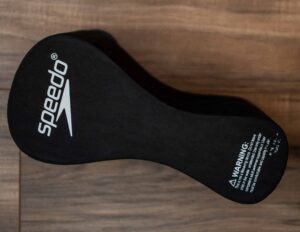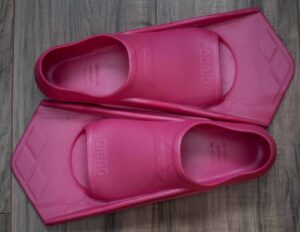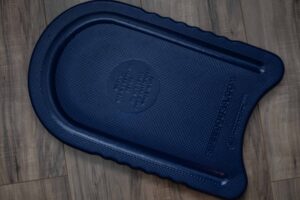Marty’s Swim Tips
I’ve been asked numerous times how I swim the way I do. I tell people that I’m lazy. Why take 22 strokes to a length of the pool when 14-15** will do it in the same amount of time or hopefully, even faster.
I’m almost 70 years old and for speed I’m faster than most people I meet in the pool and I'm improving.
My times are getting faster, not slower.
The techniques and drills I'm suggesting here are by and large for freestyle (front crawl).
About 10 years ago I decided I needed to change my stroke for more distance - I was never much of a sprinter and puts too much stress my shoulders at this age. I've read a lot of books and watched videos.
Some of the references I have used follow. I took bits from each. Looking for things that worked for me. Everyone’s body is different and not everything works for all. Try things and see what works. I also do a lot of drills - I do stroke drills pretty much every work out.
www.swimsmooth.com - out of Australia. Some really good basic videos. Find the ones that show ideal stroke for your body type.
(** Not every body type can or will do 14-15 strokes per length. The videos on this site will go into that in more detail.)
They also have lots of training drills.
The Science of Swimming by John Counsilman. This was the bible for competitive swimming for years. My coach used it in the 1960s to  build an amazing swim team. Later versions may be called, The Techniques of Swimming Not an easy book to find. I have one or two copies about.
build an amazing swim team. Later versions may be called, The Techniques of Swimming Not an easy book to find. I have one or two copies about. ![]()
Total Immersion by Terry Lauglin - I took a few useful pointers from this book. Much of it I left behind. It did get me rotating more and extending my stroke. I do most of my swimming in a pool and I think that the Total Immersion lends itself more to open water.
Blythe Lucero’s book ‘Shape Up’ is worth getting. One of the drills that I found most useful, is what is called skating. Under the Freestyle Drills section there are 8 drills that you can use. She doesn’t suggest using fins but I’ve combined 2-3 drills into one. Put some fins on and flutter kick with your body on about a 45 degree angle - imagine a skate on the front edge of your hip bone. Lower arm stretched out in front of you and upper arm laying over your upper hip which is partly out of the water. You are kind of ‘skating’. You have to feel what the correct angle is for you. I drill this almost every workout. Kick about half a length on one side (or as far as you can) then switch sides. Some videos show going completely on your side when you do this drill. I suggest to find the sweet spot that you like when you are swimming and do that. It helps drill in muscle memory. It is more likely going to be in the neighbourhood of 45 degrees.
Here is a 15 second clip of an example. I do not go that much onto my side when I'm doing the drill as I try and duplicate the angle that I would do when actually swimming. The video gives you an idea though.
This drill, swimming on your side or ‘skating’ helps with several things. Breathing: If you are turning your body a bit more it is easier to breathe, you will not need to turn your head as much. Stroke: It helps to extend your stroke, gives you a longer reach. Streamline: An example I got from the Total Immersion book was the tugboat vs the sailboat analogy. A tugboat is flat and pushes through the water whereas a sailboat, having less of a profile, cuts through the water. These are akin to your body being flat in the water (tugboat) or rotating side to side in your stroke so that you are cutting through the water (sailboat). Arm recovery: if you are on your side it is easier to bring your recovering arm out and over the water. ![]()
 As in any of my other tips, how you can do each of these depends on body type and natural range of motion.
As in any of my other tips, how you can do each of these depends on body type and natural range of motion. ![]()
Another drill that I recommend for front crawl is using pull paddles with buoy for your legs. Not racing. This drill gets you to extend your stroke. Also, with a good pair of paddles you can ‘feel’ the stroke much better through the whole motion. It also helps you get that rotation in.
Using proper rotation, you will engage your latissimus dorsi and your core muscles. Not just using your arms and shoulders.
Two beat kick and six beat kick
![]() For most of my swimming life I used a 6 beat kick. I switched to a 2 beat kick about 10 years ago. A sort of a one/two kick. As right arm/hand comes out of the water and I’m slightly turned on my left side I kick extra hard with my right leg/foot. Gives me an extra thrust and keeps my balance and my ass from fishtailing.
For most of my swimming life I used a 6 beat kick. I switched to a 2 beat kick about 10 years ago. A sort of a one/two kick. As right arm/hand comes out of the water and I’m slightly turned on my left side I kick extra hard with my right leg/foot. Gives me an extra thrust and keeps my balance and my ass from fishtailing.
I honestly don’t remember exactly how I switched from one to the other. I think I basically got lazy with my kick. Counsilman (The Science of Swimming) did tests to see how much the kick was influencing one’s speed. Not by much. So I just slowed my kick down. If you want to do this try, in the beginning, to just use the kick for balance. 
Alter Your Speed
There are different ways to alter your speed and dozens of workouts that you can find in books and online. Changing your speed whether you are doing steady lengths or interval training is important.
In the Science of Swimming, Counsilman talks about the Fartlek method of training. This can be used in other sports as well. It is basically varying your speed when training. When I got back into swimming after an extended break after high school, I used this method. In a 25 yard/metre pool do this:
100m easy/100m hard
75m easy/75m hard
50m easy/50m hard
25m easy/25m hard
25m easy/25m hard
50m easy/50m hard
75m easy/75m hard
100m easy/100m hard
This works out to 1000m/yds. If you are just getting going again, this is a good way to begin. Do that for a bit and then change it up.
McMaster University did a study some years back comparing Sprint Interval Training to traditional endurance training. I try and do some of both and find that especially when I don’t have lots of time for a workout, I can still get good gain. It's a bit technical but you see the study here: https://journals.plos.org/plosone/article?id=10.1371/journal.pone.0154075
Get workouts that keep your interest. Change them periodically to ensure this. Incorporate drills into every workout.
If you get someone to critique your swimming, make sure they are correcting only one thing at a time. If they are telling more than that, get another coach. Figure out  what is ‘most’ wrong with the stroke and start there. It’s like trying to get someone to breath properly by turning their head to the side when they can’t even keep their face in the water. Might be as simple as getting a decent set of googles. Some individuals that can't get the breathing right may need to practice bobbing. Learning to breath out under water then come up and breath in above the water. Smooth and regular.
what is ‘most’ wrong with the stroke and start there. It’s like trying to get someone to breath properly by turning their head to the side when they can’t even keep their face in the water. Might be as simple as getting a decent set of googles. Some individuals that can't get the breathing right may need to practice bobbing. Learning to breath out under water then come up and breath in above the water. Smooth and regular.
Another thing is to try and increase your training on a gradient. Don’t overdo it. Increase your intensity and distance by smaller increments. If you are getting too exhausted, let your body rest.
The last thing I would say it keep creating, don't get into a rut. Set goals, even if small. Not everyone needs to be an Olympic swimmer or compete in a triathlon. Try something new or challenge yourself in even some small way. And paramount, as with anything, have fun!